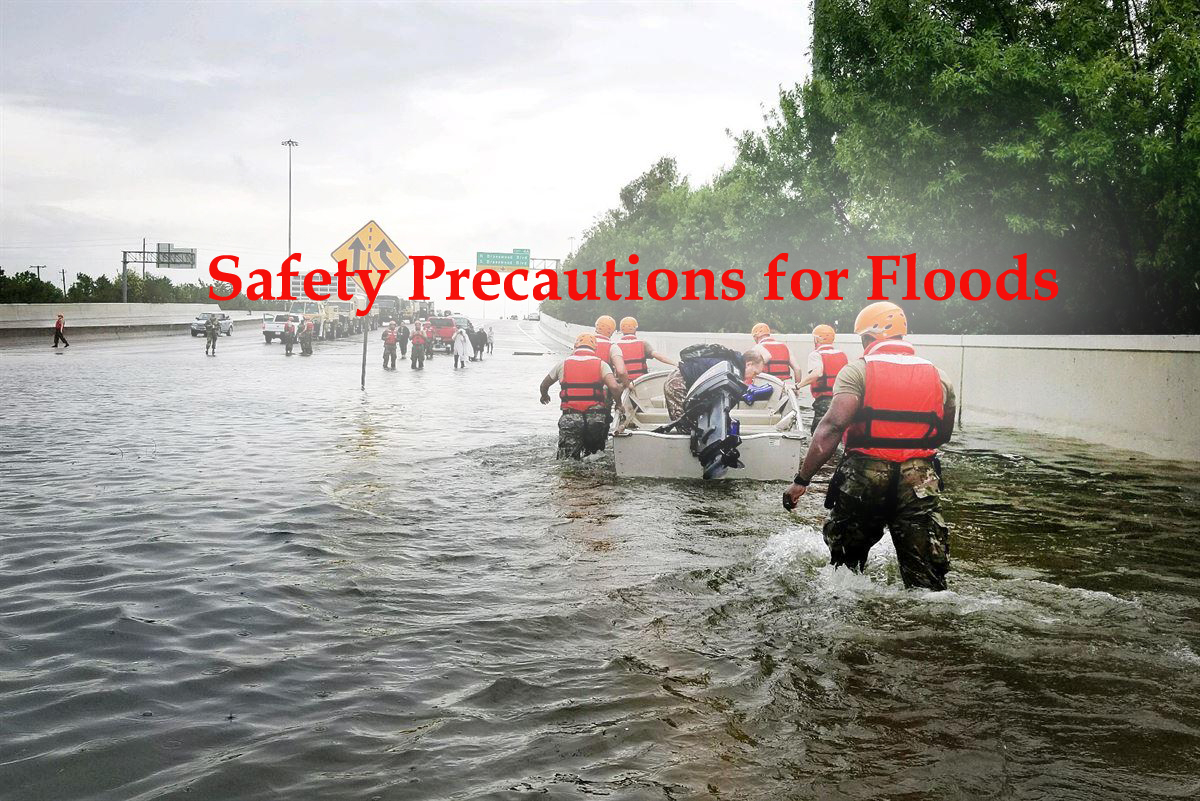Protecting Yourself During Flash Floods: Understanding Alerts And Warnings

Table of Contents
Understanding Flash Flood Alerts and Warnings
Knowing the difference between a flash flood watch and a warning is the first step towards effective flash flood safety. These alerts are designed to give you time to prepare and react appropriately.
What is a Flash Flood Watch?
A flash flood watch means that conditions are favorable for flash flooding to develop. This isn't a call to immediate action, but it's a crucial heads-up. Think of it as a yellow light – slow down, pay attention, and get ready.
- Stay informed: Monitor local news, weather apps, and official weather service websites for updates.
- Prepare your family: Review your emergency plan (more on that below). Ensure everyone knows where to go and what to do.
- Monitor the weather: Pay close attention to rainfall amounts and forecasts. Heavy rainfall in a short period is a key indicator of potential flash flooding.
- Example: "A Flash Flood Watch is in effect for [County Name] until [Time]. Heavy rainfall is expected throughout the afternoon, increasing the risk of flash flooding in low-lying areas and near rivers and streams."
What is a Flash Flood Warning?
A flash flood warning means that flash flooding is happening or is imminent. This is your red light – immediate action is required.
- Take immediate action: Evacuate if instructed by authorities. Do not delay.
- Seek higher ground: Move to the highest possible ground immediately. Do not attempt to drive through floodwaters.
- Stay informed: Continue monitoring emergency broadcasts for updates and instructions.
- Example: "A Flash Flood Warning is in effect for [City/Town]. Flash flooding is occurring near [Location]. Seek higher ground immediately. Do not attempt to travel unless absolutely necessary."
What is the difference between a Watch and a Warning?
| Alert Type | Meaning | Action Required |
|---|---|---|
| Flash Flood Watch | Conditions are favorable for flash flooding to develop. | Monitor the situation, prepare your family and home. |
| Flash Flood Warning | Flash flooding is occurring or is imminent. | Take immediate action; evacuate if instructed. |
Preparing for Flash Floods
Proactive preparation significantly increases your chances of surviving a flash flood unharmed. By taking preventative steps, you minimize the risk and improve your family's safety.
Creating a Family Emergency Plan
A well-defined family emergency plan is crucial for flash flood preparedness. This plan should outline clear procedures for communication, evacuation, and reunification.
- Establish a meeting place: Designate a location outside your flood-prone area where your family will meet if separated.
- Identify evacuation routes: Know multiple routes to higher ground. Consider alternative routes in case of road closures.
- Pack an emergency kit: Include essentials like water, non-perishable food, medications, first-aid supplies, flashlights, a battery-powered radio, important documents (copies of identification, insurance policies, etc.), and extra clothing.
Protecting Your Property
Protecting your property from flood damage can minimize losses and reduce the severity of the impact of a flash flood.
- Elevate valuable items: Move important documents, electronics, and furniture to higher floors or shelves.
- Move vehicles to higher ground: Park your vehicles in a safe, elevated location.
- Consider flood insurance: Flood insurance is often not included in standard homeowner's insurance policies. Investigate your options to protect your financial investment.
- Install flood barriers or sandbags (if time permits): If you have time before a flash flood, sandbags and barriers can help protect your home's entrance.
Knowing Your Risk
Understanding your personal risk is paramount to effective flood preparedness.
- Identify flood-prone areas: Familiarize yourself with areas in your community that are historically prone to flooding.
- Check flood maps: Use online resources to access flood maps and identify flood risk zones in your area.
- Understand your risk factors: Consider your location's proximity to rivers, streams, and low-lying areas, as well as the terrain and soil type.
Actions to Take During a Flash Flood
During a flash flood, swift and decisive action is crucial. Your primary goal is to reach safety and protect yourself from harm.
Immediate Actions
When a flash flood warning is issued, act immediately. Every second counts.
- Move to higher ground immediately: This is the most critical step. Do not delay.
- Avoid driving or walking through floodwaters: Even shallow water can be deceptively dangerous and conceal hazards like downed power lines or debris.
- Turn off electricity and gas (if safe to do so): Prevent electrical shocks and gas leaks. Prioritize your safety.
- Do not touch downed power lines: Downed power lines are extremely dangerous.
Seeking Shelter
Once you've reached higher ground, find safe shelter.
- Find a sturdy building on higher ground: Choose a structure that's unlikely to be affected by rising water levels.
- Stay away from floodwaters and moving water: Avoid contact with floodwaters at all costs.
- Listen to emergency broadcasts: Stay informed of official updates and instructions.
Post-Flood Actions
After the flash flood subsides, be cautious and follow safety guidelines.
- Wait for official clearance before returning home: Authorities will assess the damage and ensure it's safe to return.
- Be aware of potential hazards: Floodwaters can be contaminated with sewage, chemicals, and debris. Wear protective gear and avoid contact.
- Contact your insurance provider to report damages: Document the damage with photos and videos and file a claim as soon as possible.
Conclusion
Flash floods are dangerous and unpredictable. By understanding flash flood alerts and warnings, preparing in advance, and taking appropriate actions during a flood, you significantly reduce your risk. Remember, the key to staying safe is preparedness and swift action when a flash flood warning is issued. Don't delay – make a plan today to protect yourself and your family from the dangers of flash floods. Learn more about flash flood safety and develop your emergency plan now.

Featured Posts
-
 Learning From Sarah Vines Whats App Error Crisis Communication Strategies
May 26, 2025
Learning From Sarah Vines Whats App Error Crisis Communication Strategies
May 26, 2025 -
 Kapan Moto Gp Argentina 2025 Tayang Di Trans7 Lihat Jadwalnya
May 26, 2025
Kapan Moto Gp Argentina 2025 Tayang Di Trans7 Lihat Jadwalnya
May 26, 2025 -
 Captured In Gaza The Ordeal And Resilience Of Idf Soldiers
May 26, 2025
Captured In Gaza The Ordeal And Resilience Of Idf Soldiers
May 26, 2025 -
 Marc Marquez Di Moto Gp 2025 Analisis Klasemen Dan Peluang Juara
May 26, 2025
Marc Marquez Di Moto Gp 2025 Analisis Klasemen Dan Peluang Juara
May 26, 2025 -
 Le Csa Condamne T Il La Rtbf Pour Le Sketch Du Grand Cactus Sur Le 128e Sexe
May 26, 2025
Le Csa Condamne T Il La Rtbf Pour Le Sketch Du Grand Cactus Sur Le 128e Sexe
May 26, 2025
Latest Posts
-
 Lidl Elkepeszto Gyujtoi Markak Akcios Aron Erdemes Sorban Allni
May 29, 2025
Lidl Elkepeszto Gyujtoi Markak Akcios Aron Erdemes Sorban Allni
May 29, 2025 -
 Rekordarak A Vateran Ime A Legkeresettebb Es Legdragabb Termekek
May 29, 2025
Rekordarak A Vateran Ime A Legkeresettebb Es Legdragabb Termekek
May 29, 2025 -
 Hol Vannak A Szazezreket Ero Targyak Igy Deritheted Ki
May 29, 2025
Hol Vannak A Szazezreket Ero Targyak Igy Deritheted Ki
May 29, 2025 -
 A Vatera Legdragabb Termekei Szazezrekert Cserelnek Gazdat
May 29, 2025
A Vatera Legdragabb Termekei Szazezrekert Cserelnek Gazdat
May 29, 2025 -
 Felbecsuelhetetlen Erteku Targyak Keresd Meg A Szazezreket Ero Holmikat A Lakasodban
May 29, 2025
Felbecsuelhetetlen Erteku Targyak Keresd Meg A Szazezreket Ero Holmikat A Lakasodban
May 29, 2025
